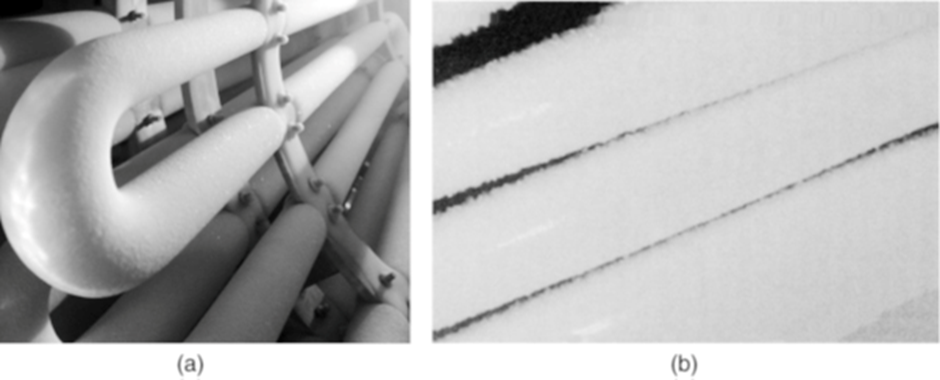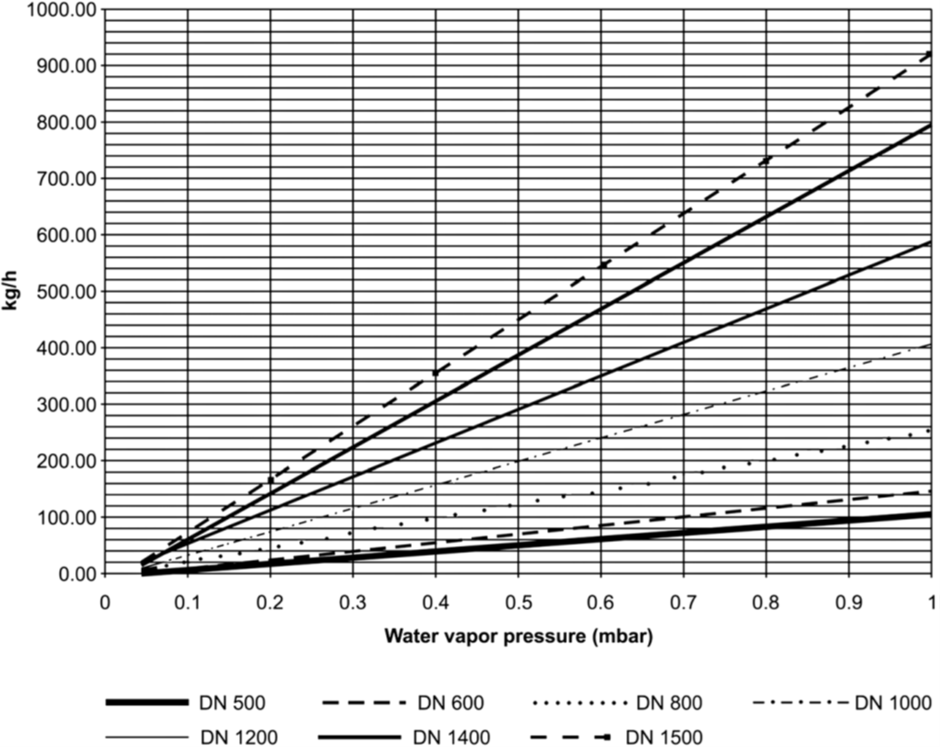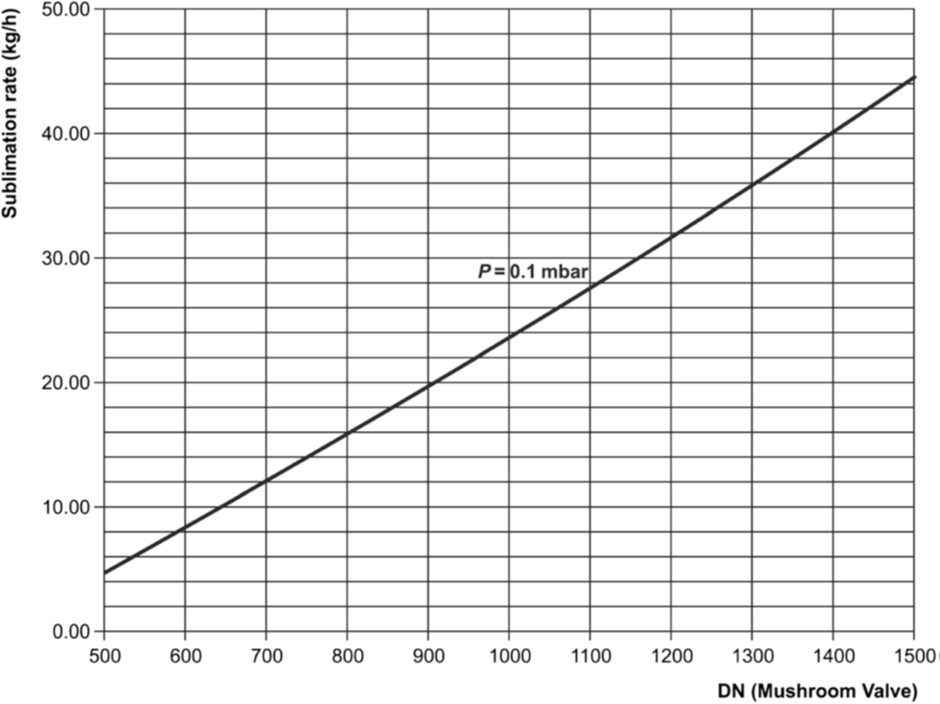Five Essential Requirements That a Water Vapor Condenser Must Meet
News & Insights2023-02-10
A Water vapor condenser is one of the most critical components in a freeze dryer.

During sublimation, the volumes of water vapor are too large to be pumped by mechanical vacuum pumps in the pressure range of freeze-drying, 1 kg of ice at 0.4 mbar represents a pump in the pressure range of freeze-drying, 1 kg of ice at 0.4 mbar represents an ejector could achieve this, but these need large quantities of cooling water and steam, in addition to large areas for the multistage systems. In today’s plants, water vapor is therefore condensed on cold surfaces, consisting of plates or mostly of tube coils (see Figure 1a and b).

Figure 1 Coils in a condenser covered by ice, observed through a window during two freeze-drying processes. (a) Smooth, solid surface. (Photograph by AUSTAR Group, P. R. China); (b) Porous, snow-like surface, which occurs typically, if the pressure of permanent gases during primary drying is high. (Peter Haseley and Georg-Wilhelm Oetjen, Freeze-Drying Third, Completely Revised and Enlarged Edition ,photograph by Dr. Otto Suwelack, D-48727 Billerbeck, Germany)
To ensure a successful freeze dryer process, a water vapor condenser in a freeze dryer must meet the following five essential requirements:
(1)The surface area has to be large enough to condense the ice at a maximum thickness, which does not reduce the heat transfer from the tube surface to the condensing surface of the ice. The heat conductivity of ice depends on its condensing surface of the ice. The heat conductivity of ice depends on its structure. If this structure is solid and smooth, one can calculate 6.3 kJ/m h °C; If the structure is more like snow, the heat conductivity is much lower. This happens typically if the air pressure is too high (see Figure 1). To condense 1 kg of water in 1 h on 1 m2 surface on top of an existing ice layer of 1 cm, the temperature difference between tube surface existing ice layer of 1 cm, the temperature difference between tube surface temperature and the ice surface temperature is ∼4.5 °C. To reduce this temperature difference to 2°C, the condenser would have to be defrost every 30 min. Therefore, it is practical to design the condensing surface large enough to take up the total amount of ice of one charge in a layer of ∼1 cm, for example, if the total amount of ice to be condensed is 10 kg, the surface should be 1 m2 to form a layer of 1 cm; if the primary drying time is long with a small amount of water per hour, then half the size (0.5 m2) may be sufficient. In this example, the temperature difference during a primary drying cycle of 5 h is limited to 1-2°C.
(2)The geometry of the connection between the chamber and condenser must be designed for the transportation of large volumes of water vapor. The volumes of water vapor to be transported at different sublimation pressures are shown in Figures 2–4.

Figure 2 Water vapor flow density (g/cm2h) as a function of the ratio l/d of the connecting tube from the chamber to the condenser at four different pressures pch as parameters (l length, d diameter of the tube): 1, 0.1 mbar; 2, 0.32 mbar; 3, 0.4 mbar; 4, 1.3 mbar.

Figure 3 The diagram shows the water vapor transportation rate (kg of water per hour) at different pressures and different valve sizes.

Figure 4 The diagram shows the water vapor throughput at different cross sections (l/d = 1.6) at a given sublimation pressure of 0.1 mbar. A precondition is that the connection between the chamber and condenser must be straight.
(3)The temperature difference between the inlet and outlet temperature at the coil(s) of the refrigerant should be small, to ensure an uniform condensation on the total coil. On warmer areas no ice will condense until the temperature at the ice surface has increased to the warmer temperature on the coil. For large surfaces, it is necessary to use several coils or plates in parallel, each of which must be separately temperature controlled. If the condenser is operated in an overflow mode (this applies to condensers that are operated with ammonia), the weight of the liquid column should not change the boiling temperature of the liquid at the bottom of the column measurably.
(4)The flow of water vapor should deviate as little as possible before the first condenser surface. The condenser design has to ensure that the water vapor is completely frozen and the remaining water vapor pressure is practically equal to the vapor pressure at the ice surface. This can only be achieved if the vapor passes over several condenser surfaces in series.
(5)The permanent gases must be pumped off at the lowest position in the condenser. They are denser than water vapor, concentrate at the bottom of the condenser, and fill up the condenser housing in time. This permanent gas reduces the vapor transport to the cold surfaces and forms a “snow ice” as can be seen in Figure 1. A condenser meets these requirements in general, but other designs are possible.
Obviously, the water vapor condenser need to be designed very carefully to ensure high performance of the freeze drying system.







 Search
Search 中文
中文










